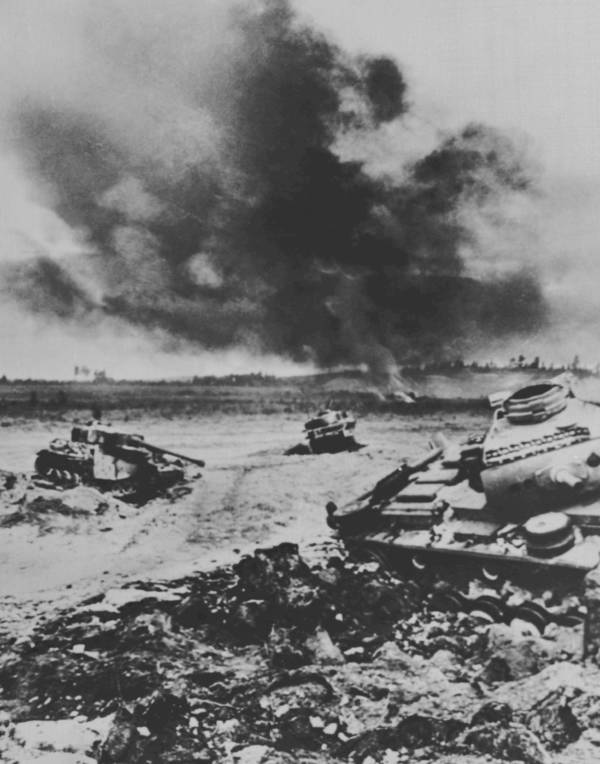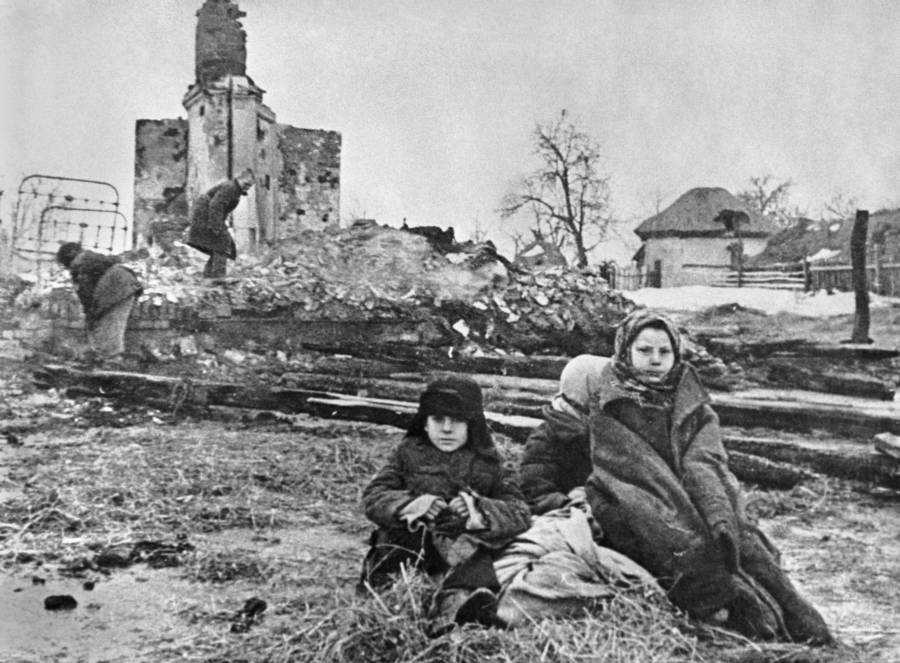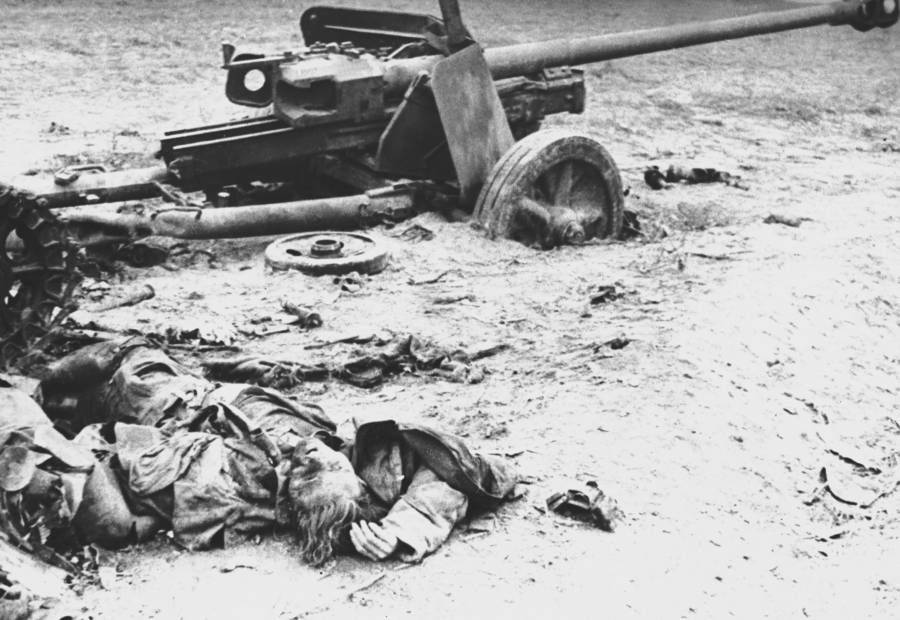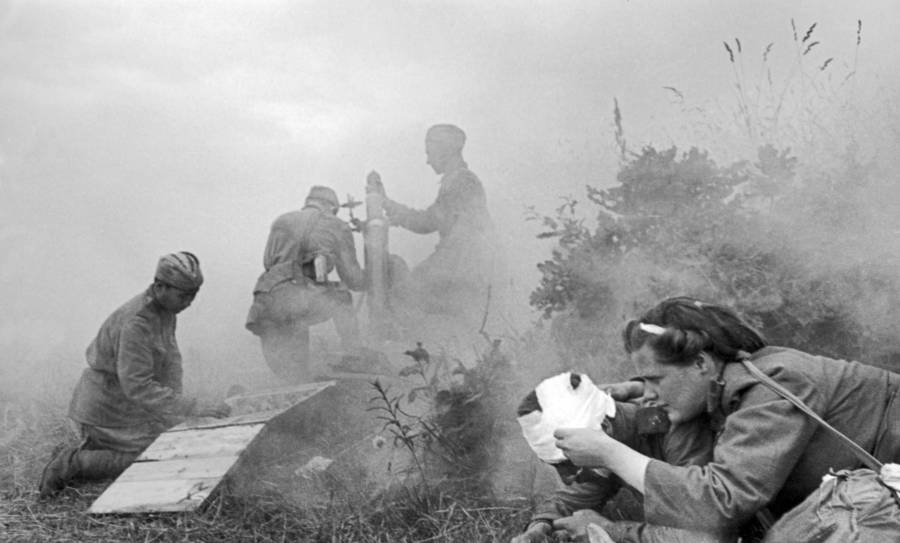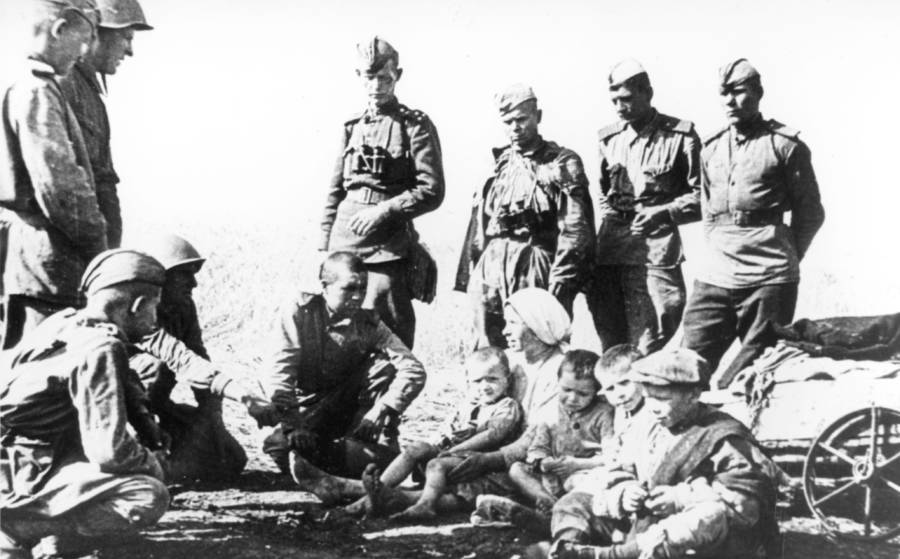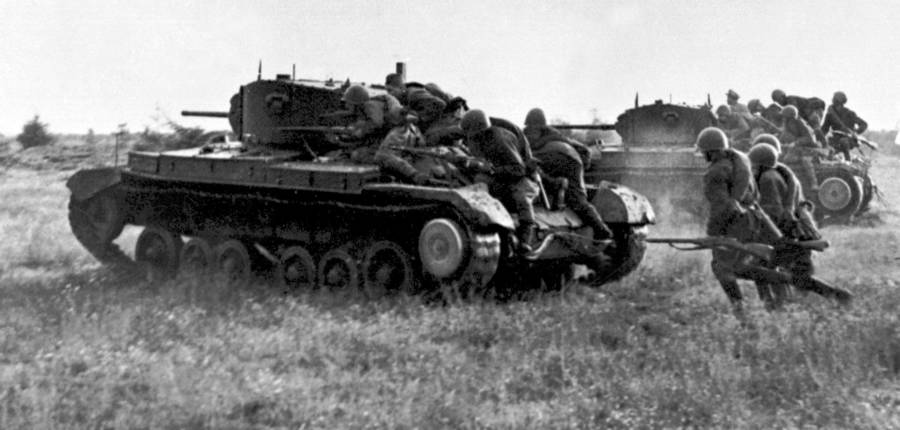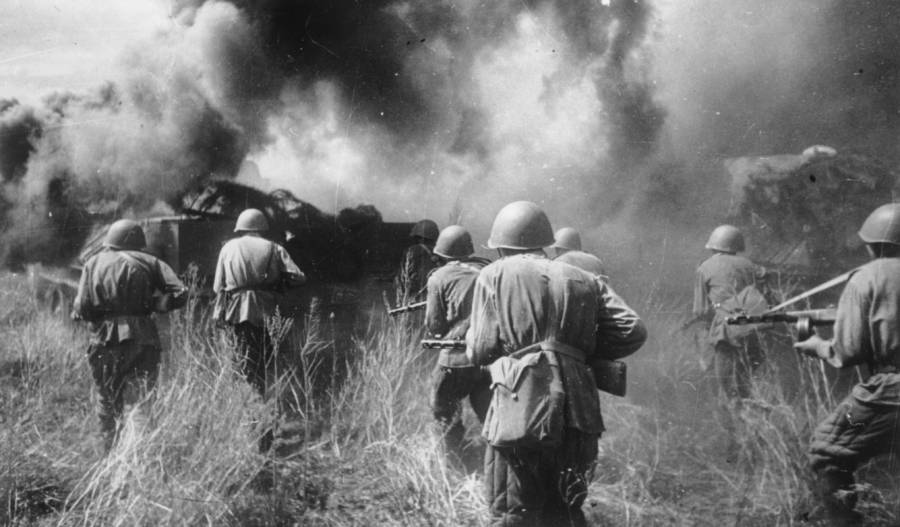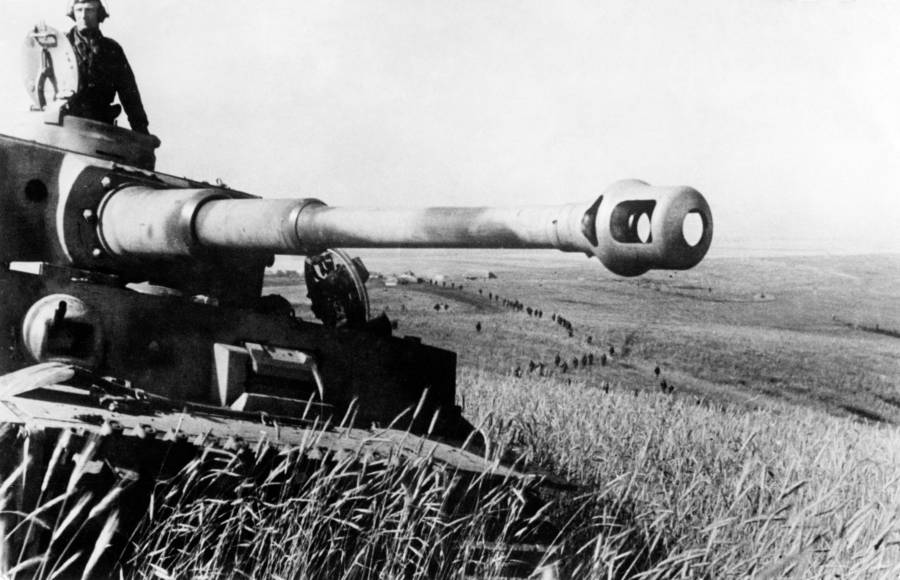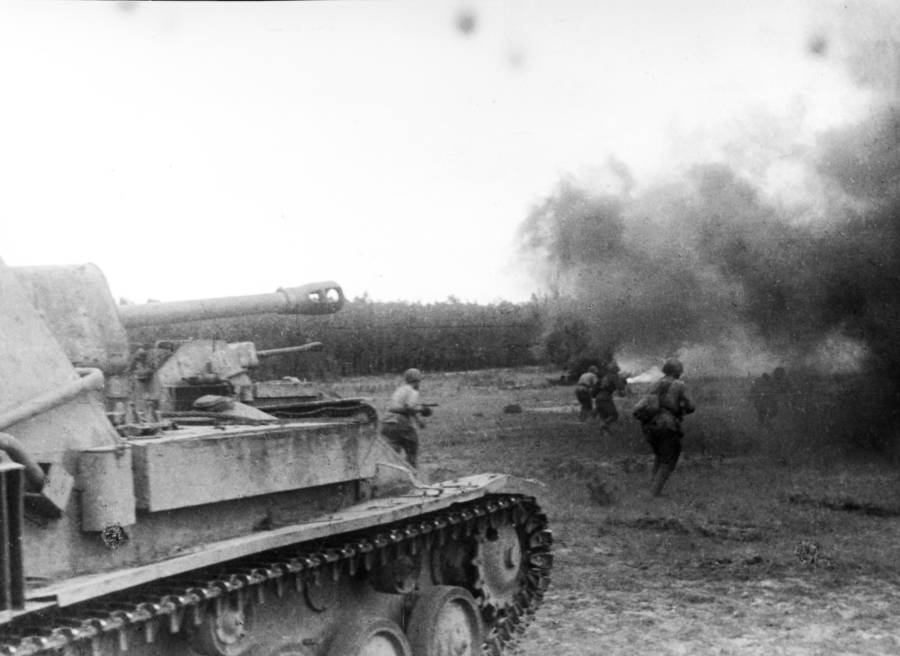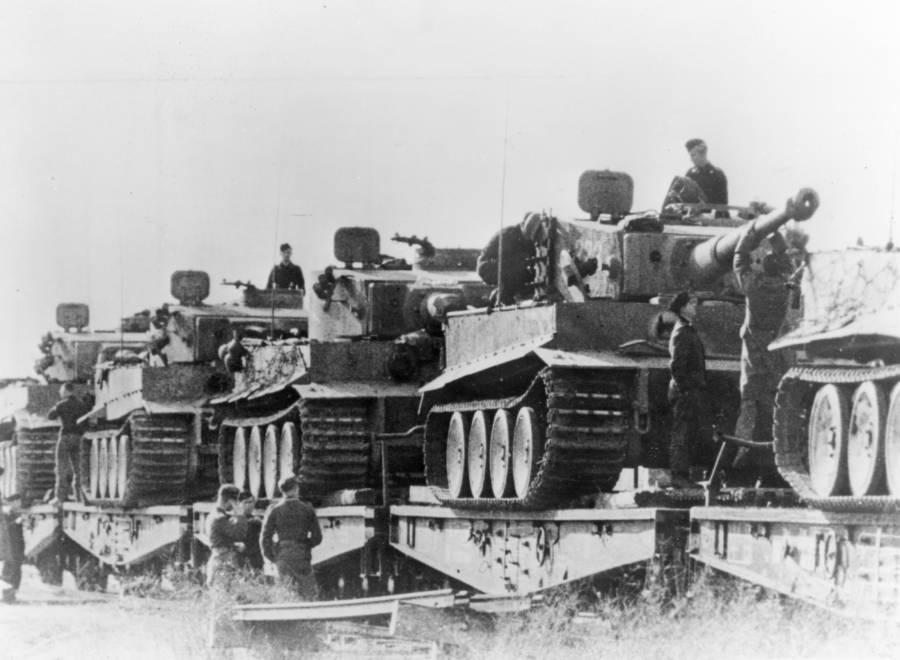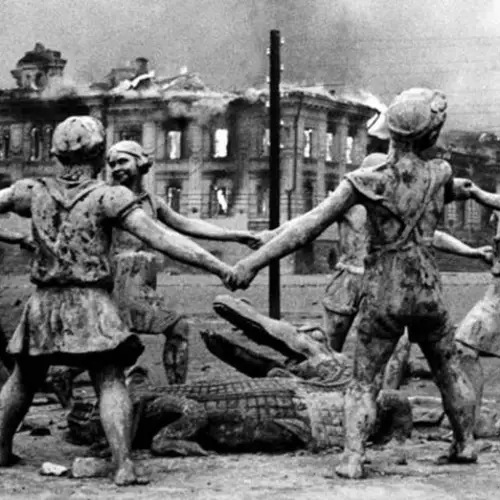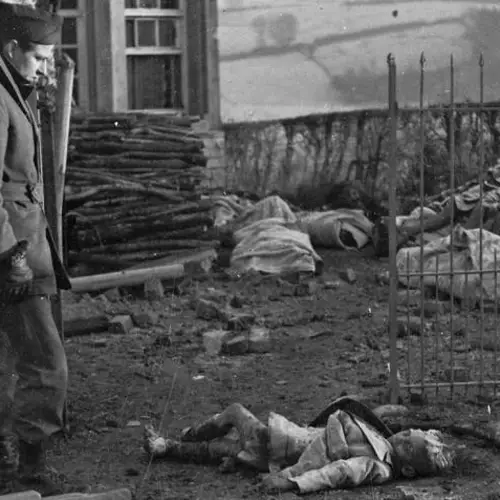Haunting photographs that reveal how 1943's Battle of Kursk, the decisive face-off between Nazi Germany and the Soviet Union, helped turn the tide of World War II.
The Battle of Kursk, fought in July and August of 1943, was the last German offensive against the Red Army in World War II. In terms of initiative and momentum, it marked the end of the Nazis' advance on the Eastern Front.
By some accounts, it was the largest tank battle in history, involving an estimated 7,500 tanks and well over 2 million troops from both sides.
At Kursk, Germany’s superior technology and military training were defeated by the Soviets' sheer numbers and industrial capacity. After the battle, the German forces never regained the advantage in the East or made any significant breaks through Soviet lines — the tide had turned. This is the story of the most important World War II battle most people have never heard of.
Germany's Pre-Kursk Defeat At Stalingrad

Keystone-France/Gamma-Keystone/Getty ImagesChief Nazi propagandist Joseph Goebbels was forced to deliver the news of the German defeat at Stalingrad.
Before the Battle of Kursk, there was the Battle of Stalingrad, the largest confrontation of World War II. It lasted from August 1942 to February 1943 and destroyed the German Sixth Army, with 91,000 German soldiers surrendering to Soviet troops on the last day of the battle.
The losses at Stalingrad had been so staggering that they were impossible to deny to the point that it was the first time the Nazi propaganda machine admitted any defeat to its own public.
Dr. Joseph Goebbels, Hitler’s minister of propaganda, threw Germany into a period of official state mourning. The radio broadcast the military funeral march "Ich Hatt Einen Kameraden" (I Had A Comrade) three times in a row after the announcement. Theaters and restaurants closed for days.
On February 18, 1943, Goebbels gave the most famous speech of his career in his Total War Speech, also known as the Sportpalast Speech, in which he rallied a carefully curated audience of "soldiers, doctors, scientists, artists," and more to completely devote themselves to the war effort.
According to Goebbels, Germany was in danger of losing the war unless all Germans — men and women — worked all day, every day in the effort to defeat the Allies.
He announced that German citizens must prepare to "devote [their] entire strength to providing the Eastern front with the men and materials it needs to give Bolshevism its mortal blow." It was an apparent effort from the Nazis to turn the loss at Stalingrad into the rallying cry for a new offensive effort.
To boost its numbers, the German Army recruited World War I veterans up to age 50 and young men from the Hitler Youth program, all of whom were previously exempt from service.
But the German Army had been losing momentum and desperately needed a victory more than a call to arms from its Nazi leaders. After Stalingrad, the Soviet troops, known as the Red Army, continued to march 450 miles west through the winter until a German victory at Kharkov, in present-day northeastern Ukraine, stopped them.
The movements had left a "bulge" in the German-Soviet front lines centered around Kursk, about 120 miles north of Kharkov and 280 miles south of Moscow, which would later be referred to as the bulge of Kursk.
This meant that Kursk was under Soviet control but was essentially surrounded by German enemies to the west, north, and south. Readying their next strategy to resume victory in battle, Germany’s generals believed Kursk was the best point to attack.
But while Germany was planning to attack Kursk, the Red Army was preparing to be attacked. Both sides summoned droves of fresh soldiers and tons of artillery for the Battle of Kursk.
The Battle Of Kursk
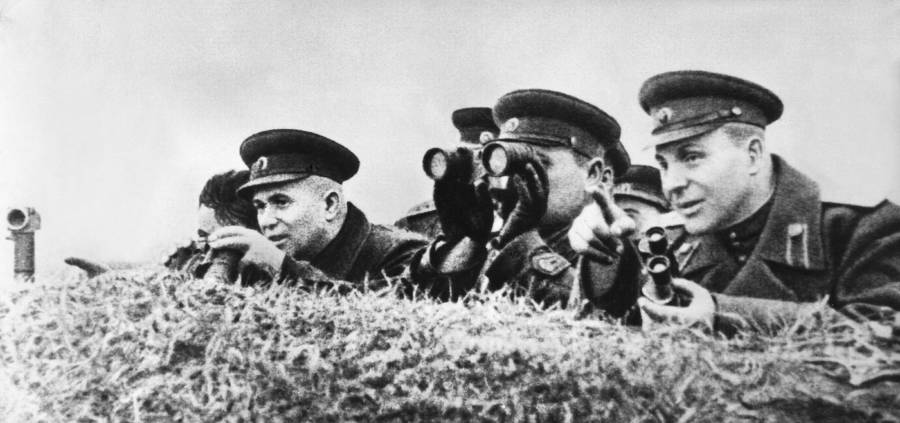
Ullstein Bild/Getty ImagesSoviet Guardsmen Corps during the Battle of Kursk. The Soviet Union amassed more than a million men to fight in the conflict.
From March through June of 1943, both sides poured all their might into preparing for Kursk. The Germans amassed about 600,000 troops and 2,700 tanks and assault guns while the Soviets pushed 1.3 million troops and 3,500 tanks to the same area.
The significance of the German operations in Kursk led to the offensive to be named Operation Citadel, a move to obliterate the Soviet Army by way of a two-pronged attack from the north and the south in areas near Kursk.
"Every officer and every man must recognize the significance of this attack. Victory at Kursk must serve as a beacon to the world," Hitler announced to his men.
But privately, Hitler was far less confident about his army's chances at Kursk. "The thought of this attack makes my stomach queasy," he told Nazi General Heinz Guderian on May 10, knowing the Soviet Army greatly outnumbered his own.
Germany's goal with the attack became less ambitious: Instead of defeating the Red Army, Germany's best hope was to weaken or even just distract it so that the Nazis could devote more resources to the Western Front.
Germany's northern and southern attacks began on July 5, with German infantry and armor breaking through the first lines of Soviet infantry and penetrating to their deeper defensive positions.
But just two days in, the northern advance led by Field Marshal Günther von Kluge was bogged down in Ponyri, a small town roughly 40 miles north of Kursk. Soviet Marshal Konstantin Rokossovsky had evacuated all civilians from Ponyri beginning in April and had prepared a strong defense there in anticipation of the Germans.
Over several days, Ponyri became a "mini Stalingrad" of the Battle of Kursk, with intense, house-to-house fighting and the same ground trading hands several times each day. After five days, the Germans lost thousands of men and hundreds of tanks.
The southern prong of Operation Citadel was commanded by German Field Marshal Erich von Manstein.
Racing to Kursk, the southern faction was expected to break through the Red Army's defense within 24 hours and to have advanced halfway to the city within 48 hours. But there were more difficulties on the battlefield than German General Hermann Hoth expected.
To the Germans' surprise, the Soviets quickly immobilized 36 of their Panther tanks as the machines became entangled in a hotbed of Soviet field mines that brought the panzer division to a halt.
Eventually, by July 11, von Manstein's forces reached a point about two miles south of the town of Prokhorovka, about 50 miles southeast of Kursk. This set the stage for the battle that would make or break the southern attack: the Battle of Prokhorovka, one of the biggest tank battles in history.
In the span of a few hours, 306 German tanks fought 672 Soviet tanks, according to Russian military historian Valeriy Zamulin.
Commander Rudolf von Ribbentrop, the son of German Foreign Minister Joachim von Ribbentrop, recalled:
"What I saw left me speechless. From beyond the shallow rise about 150-200 meters in front of me appeared 15, then 30, then 40 tanks. Finally there were too many to count. The T-34s were rolling forward toward us at high speed, carrying mounted infantry [standing on the engine compartment and clinging onto handles welded onto the hull]…. Soon the first round was on its way and, with its impact, the T-34 began to burn."
Vasili Bryukhov, a T-34 commander on the Soviet side, later recalled the difficulty of maneuvering one of a sea of tanks:
"The distance between the tanks was below 100 meters—it was impossible to maneuver a tank, one could just jerk it back and forth a bit. It wasn’t a battle, it was a slaughterhouse of tanks. We crawled back and forth and fired. Everything was burning. An indescribable stench hung in the air over the battlefield. Everything was enveloped in smoke, dust and fire, so it looked as if it was twilight....Tanks were burning, trucks were burning."
It's generally agreed that — remarkably — the Germans came out on top. A whopping 400 Soviet tanks were destroyed, compared to about 80 German ones. But even a tactical victory wasn't enough to change the course of Operation Citadel.
A Battle Of Brute Strength
In many ways, the Battle of Kursk was a showdown of sheer size and power between the forces of Nazi Germany and the Soviet Union. On the German side, 2,451 tanks and assault guns, and 7,417 guns and mortars were rounded up for the troops in Kursk. On the other hand, the Red Army assembled 5,128 tanks and self-propelled guns, 31,415 guns and mortars, and 3,549 aircraft.
German infantryman Raimund Rüffer remembered the chaotic hellfire at the start of the Kursk offensive:
"I instinctively yelled a warning, dropped to one knee and squeezed the trigger of my rifle. The butt kicked and a round was sent hurtling toward a faceless Soviet soldier. In that same instant I was knocked off my feet as though hit by a heavyweight boxer. A Soviet round had struck me in the shoulder, shattering the bone and leaving me gasping for air."
The heavy tank force played a massive role in the Battle of Kursk. Hitler had placed such faith in Germany's new Panther medium tanks that he pinned Operation Citadel's launch date on the arrival of the new tanks, despite concerns about their mechanical reliability and his army's lack of training on the new machines.
In contrast, the Soviets' T-34 tanks were time-tested and cost-efficient. By mid-1941, the Soviets had more tanks than all the armies of the world combined; they manufactured 57,000 T-34 tanks by the end of World War II. Size and strength like this ultimately helped the Soviets prevail at Kursk.
The Finale And Aftermath Of The Battle Of Kursk

TASS/Getty ImagesResidents clear the rubble on Lenin Street after a German air raid on the Eastern Front.
By July 12, with the northern German prong having already been turned back at Ponyri, Hitler and his men realized that Operation Citadel was on the verge of failure. Hitler met with Kluge and von Manstein to discuss discontinuing the offensive. Allied forces had just invaded Sicily, and he thought his army could be put to better use on the Western Front.
They continued their southern offensive for a few days. But by July 17, all offensive operations ceased and the German Army was ordered to withdraw. Operation Citadel was done.
The attacking German force at Kursk consisted of 777,000 Nazi forces battling almost 2 million Soviets. In this battle of brawn, the Red Army won by a landslide — the combined strength of Soviet troops on the Central and Voronezh Fronts alone was 1,337,166 men. They also had twice the number of tanks and aircraft as the Germans and four times the artillery.
Losses on the field were sharply lopsided, some estimates counting only 200,000 German casualties compared to between 700,000 to 800,000 losses for the Soviets.
In the end, the Germans, already decimated at Stalingrad and threatened by the invasion of Italy, could not continue fighting against the never-ending waves of Soviet troops and tanks. Ponyri and Prokhorovka had been as far as they would go, and the Nazi war machine never again took the offensive in the Soviet Union.
Hitler's forward push was over. The tide in the East — and truly, the war against the Nazis as a whole — had forever turned.
Now that you've learned about the Battle of Kursk, take a look at 54 photos from the Battle of the Bulge that capture the Nazis' brutal last-ditch counteroffensive. Then, check out vintage Soviet propaganda posters from World War II and the Stalin era.


